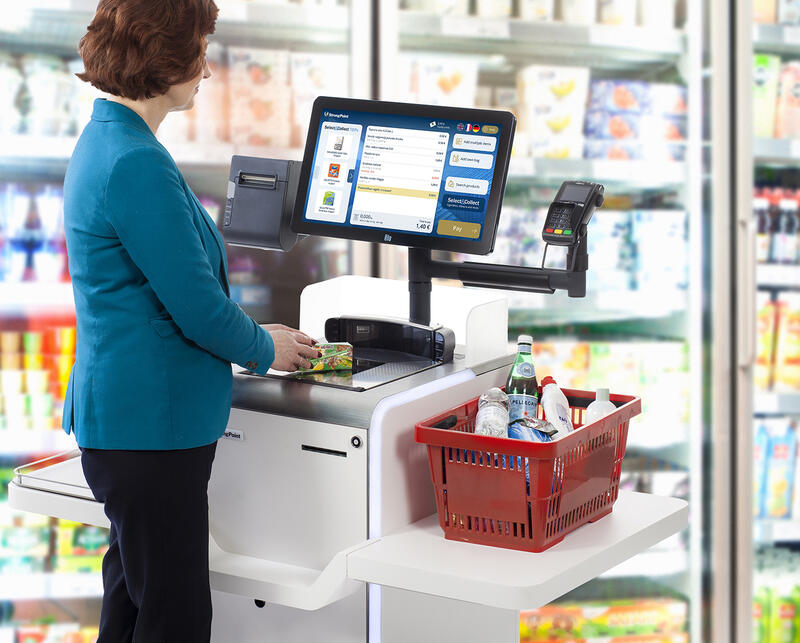When shopping in shops, you have probably come across different self-checkouts. They all have the same task, to make the customer’s shopping experience positive, and preferably more than positive. For the customer, a SCO is a SCO, it has to work smoothly and provide fast service. It’s nice when it looks good and holds all purchases. And that’s it.
The onus is on shop owners to choose a self-checkout that will meet customer expectations and contribute to the success of the business. For those making the choice, after reviewing the offerings, what really makes self-checkouts different is;
- quality,
- price,
- number of interventions required,
- speed of transactions,
- level of security.
Which SCO to choose? Retailers know their business very well, they know what slows it down and what builds it up. This knowledge is the most important, because now they just need guidance on what to look for when choosing self-checkouts that will contribute to success.
And this is where I and my article? come in.

Here are the most important elements to consider when choosing the most suitable self-checkouts for your shop.
A full-service provider for the implementation of self-checkouts.
The supplier should dedicate a team to provide assistance at each stage of implementation. This team, in cooperation with employees delegated from the client’s side, performs a mathematical analysis of transactions and customers’ purchasing habits using specially developed software. On this basis, it offers the optimal solution. A good supplier will not only train your staff, but will also evaluate the end result of the solution, and if it is unsatisfactory, will take action to improve it. To get the most out of self-checkouts in a shop, analysis using data modelling in combination with customer feedback is essential. This process is complex, time-consuming and involves a number of people, but it is essential to realise the full potential of self-checkouts. The supplier should determine the timeframe within which the chosen solutions can be successfully implemented, so that the retailer can prepare its shop, staff and customers well for the moment when self-checkouts will be available.
Self-checkouts that integrate well with existing systems and other solutions.
In order to satisfy the customer and encourage the use of self-checkouts, it is important to remember that they must offer the same capabilities as regular checkouts. Effective integration with existing systems and possible solutions is essential to coordinate receipts, loyalty points, discounts and other features available at traditional cash registers.
Self-checkout security system based on security scale.
Some suppliers offer self-checkout systems with gates. This is not convenient for the customer, who has to scan a receipt to leave the checkout area. Receipts can get lost in shopping bags or simply cannot be scanned. What happens next? Then the customer must wait for the cashier, who will open the gate for him. The self-checkout area becomes crowded, which is something we want to avoid. Suppliers of solutions with gates refer to the safety provided by this system. But are you sure?
There is no guarantee that the receipt the customer scans contains all the products the customer has in his bag. If the customer does not scan the product but places it in the packing area, the device will not register it. Of course, this situation can be intentional or not, in both cases the shop loses. To ensure safety, I recommend self-checkouts based on a security scale. This system checks the weight of the products put into the packaging area and compares it with the weight stored in the system. This solution is efficient and safe without the need to install gates that hinder the shopping process.
Intuitive self-checkout interface.
The self-checkout interface should be as intuitive and simple as possible so that the customer can reach the end goal of their visit – i.e. leaving the shop – as quickly as possible. A well chosen interface is a great way to reduce the intervention of sales assistants and encourage the customer to use self-service checkouts. I think in these times of increasing DIY popularity, everyone likes to do their DIY and likes how it works out.
In summary when choosing self-checkouts for your shop you should:
- know how fast the integration process will be
- how well the solution integrates with existing systems and other solutions,
- choose cash registers with an intuitive interface and without gates
- choose a supplier who will carry out a thorough shop analysis and train your staff.
And remember that a good supplier is one for whom, after installing the Self-checkouts, integrating the system and training the staff, the “fun” is just beginning. In order to achieve the desired goals, there comes a crucial moment – the adjustment of the self-checkouts to the shop and the customers. And that’s what customers like best.


Leave a Reply